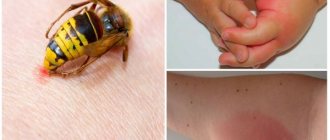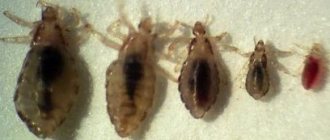How to clean a cat's ears at home
If your cat shakes its head or constantly scratches its ear with its paw, something may be bothering it.
Take the animal in your arms, caress it, carefully look inside the ear
If the ear canal is clean, great, you don’t need to do anything, but if you notice black or brown dirt, then most likely it’s wax or ear mites – then start cleaning. To properly clean your cat's ears, follow these simple rules:
Take several cotton swabs (discs). Do not use a cotton swab more than once; it is a consumable item. 1 cleaning – 1 tampon. Remember this! Place the cat next to you or hold it on your lap with one hand clasping the withers. Shy animals should be wrapped in a blanket and their paws secured to avoid scratches.
Use a dry swab to wipe the inside of the cat's ear. If it is not very dirty, this will be enough. Or you can apply a special cleaning gel to a cotton pad or moisten the cotton wool with lotion. This will help soften deposits and at the same time take care of the skin. Some of the products (boric acid) can be instilled inside to remove plugs
But before doing this, you must carefully read the instructions and take into account the indications and contraindications for the drug. If you choose to use cotton swabs to clean your ears, you need to be especially careful! You need to act very carefully. It is not recommended to insert the stick deep into the ear canal
If the cat gets scared and starts to struggle, there is a high probability of damage to the eardrum, which will lead to deafness.
Preventive ear cleaning at home
Cats should be accustomed to regular examinations and ear cleaning from an early age, since the animal’s protests can add undesirable variety to the manipulations.
Means for preventive cleaning of cats' ears
Specially produced care products are used to clean the ears:
- cleansing wet wipes - remove dirt well, are easy to use, especially convenient on the road;
- hygiene lotions - may contain both antiseptics and vegetable oils and extracts;
- hygienic ear drops - contain boric or salicylic acid, as well as plant extracts; buried shallowly in the external auditory canal in the dosage prescribed by the instructions, the ear is massaged;
- gels for ear care - also contain antiseptics and herbal ingredients;
- powder - contains iodoform, helps relieve irritation and prevents the growth of microflora; but veterinarians believe that the use of powder leads to the formation of sulfur plugs.
Photo gallery: ear cleaning products
Wet wipes are easy to use even when traveling
Lotions gently cleanse the ear and remove impurities
Ear drops can be either complex or aimed at treating a specific disease.
When caring, it is recommended to combine products from the same manufacturer’s line. Given their complex composition, interaction and compatibility with products from other manufacturers is difficult to predict. For hygienic care, you cannot use products containing antibacterial drugs; only antiseptics are permissible, otherwise this will lead to chronic intractable otitis media caused by microflora resistant to antibiotics.
If you haven’t bought anything, but you need to clean your ears, you can use:
- aqueous solution of chlorhexidine;
- Vaseline oil;
- saline solution (0.9% NaCl);
- clean water at room temperature is an extreme measure, but better than dirt.
Hydrogen peroxide, soap solutions, and alcohol-containing liquids are not suitable for use.
How to clean ears
Ear cleaning is carried out approximately in the following sequence:
- Place the cat on your lap and gently hold it close to you.
If the cat breaks out, you can hold it by the withers. If attempts to escape become more intense, the cat uses its claws and teeth - swaddle it in a towel, fix its head with one hand, and use the other to inspect the ear. Holding your cat while cleaning his ears can be challenging. - Examine the ear for discharge, inflammation, injury; make sure there is no odor.
- If necessary, wipe the ear with a tissue with lotion. You should not try to penetrate deep into the ear canal - it can be damaged or the wax can be compressed until a plug forms; All manipulations with ear cleaning must be carried out within the visible area. After applying the lotion, the napkin must first be wrung out, since excess moisture in the ear is unacceptable. Small dirt can be removed with cotton swabs, again, within visibility; The ear should remain dry after cleaning.
- If the ear is very dirty, a few drops of lotion can be placed into the ear canal and massaged into the base of the ear.
- Then wipe off the released lotion and dirt with a dry cloth.
- Release, praise and treat the cat.
Additional ways to deal with cat protests
If there is no towel or it is difficult to use, then:
- you can put the cat in a sports bag with a zipper and zip it up, leaving only the cat’s head outside, and additionally secure it with your knees;
- immobilize the cat by placing it in the sleeve of thick old clothing so that only the head remains outside;
- take a special bag to hold cats; in addition, you can use a muzzle for cats.
In all cases of restraining a cat, you need to make sure that this does not impede its breathing.
Nail caps help reduce the risk of claw injuries
Photo gallery: ways to immobilize a cat
A muzzle will help against cat bites
A small sports bag can be used to secure the animal.
Wrapping a towel around your cat can protect you from its claws.
Peculiarities of ear treatment for kittens
Caring for the kitten's ear is carried out by wiping it with a cotton pad and lotion. If it is necessary to clean the ear canal, drops are used. It is not recommended to use cotton swabs, since they can easily injure the delicate ear when the kitten moves suddenly.
Treatment of the auricle
The choice of treatment tactics for the disease largely depends on the size of the hemorrhage and the stage of the pathological process. For small hematomas, cold is indicated in the first hours after injury. Frozen foods from the freezer wrapped in cloth are suitable for this purpose. You can cool the damaged ear for 10 - 15 minutes.
If there is an open wound, it is treated with disinfectants. To reduce blood leakage, a pressure bandage is applied to the ear.
If the hematoma occurs as a result of an allergy, an infectious or parasitic disease, or otitis media, then priority attention is paid to the underlying disease.
For extensive hematomas, due to the fact that there is a high risk of infection, the most effective method of treatment is surgery. In addition, when the pathology progresses spontaneously in the final stage, fibrinous tissue grows at the site of damage. This leads to deformation of the ear cartilage, which is undesirable for show animals.
During the operation, the veterinarian opens the hematoma using an incision at the base of the ear. Blood clots and fibrin are removed. At the end of the manipulation, a fixing suture and bandage are applied. Surgery is usually performed under local anesthesia. After the operation, the animal must be in a special collar that prevents the paw from scratching the ear.
Pumping out blood with a syringe
The positive aspect of the surgical treatment method is the minimal risk of relapse, as well as the preservation of the natural shape of the ear cartilage. The disadvantages of surgery include a small stitch in the cat's ear.
In addition to surgical treatment, a veterinarian can use special dressings for show animals. A special feature of this method of treating hematoma is the absence of postoperative scars. The disadvantage is that the owner cannot apply the bandage himself; constant visits to the veterinary clinic are required.
A common way to treat small, fresh hematomas is to drain the blood with a syringe. The method is often used when the blood that has escaped from the blood vessels has not yet clotted.
Anti-inflammatory and antibacterial ointments are widely used in the treatment of the disease: levomycin, syntomycin, levomycin. For suppuration, ichthyol and Vishnevsky ointment are used. Additionally, if the hematoma becomes infected, the animal is prescribed a course of antibacterial therapy. For this purpose, penicillin antibiotics, tetracyclines, and cephalosporins are used.
Features of cleaning a kitten's ears
Many veterinarians claim that a kitten's ears are too tender for massive cotton swabs and swabs. However, it is still necessary to clean your pet’s miniature ears of accumulated secretions and dirt. For this procedure, they usually use a saline solution in a bottle, which is smoothly poured into the pet’s ears. First, three to five drops are instilled on the inner surface of the ear, after which another six to seven drops are instilled into the ear canal.
Cleaning your kitten's ears should not involve the use of harsh materials.
After instillation, the kitten’s ears are massaged for a couple of minutes to improve fluid passage. It is necessary to massage the ears at the base - this will distribute the saline solution more evenly. At the end of the procedure, put the kitten down and let him shake out the wax and secretions that have come out of his ears thanks to the drug. After this, wipe the kitten's ears with a towel to get rid of any remaining liquid.
Structural features
A cat's ears consist of three main sections:
- outer ear;
- average;
- internal.
This organ in such animals, as in most mammals, performs a dual function. Firstly, cats' ears are, of course, designed for hearing. This organ also allows animals to maintain balance and determine where is up and where is down.
How and how to clean a cat’s ears: step-by-step algorithm of actions
In this process, the main thing is the sequence of actions
First, you need to take the top of the ear and carefully turn it outward until the inside is exposed. This should be done as often as possible with each ear.
To assess the condition of the hearing organs, you will need good lighting, for example, near a window or under a bright lamp
It is important to make sure whether ear cleaning is necessary or not. A cat's ear is clean when it is pale pink, has minimal earwax, and has no traces of dirt or foul odor.
Structure of a cat's ear
Important! If your cat's hearing organs are clean, this is a good sign that she can handle personal hygiene on her own. Under no circumstances should you go into your pet’s ears just like that if they don’t require cleaning.
If anything abnormal is noticed during the hearing examination, you should take your animal to the veterinarian. It is normal for cats to have some wax and dirt in their ears. However, the release of some other beige or greenish substance should alert the owner. Although there are breeds, for example, the Sphinx, in which, due to their characteristics, the separation of sulfur is increased.
Abnormal discharge in the ears is considered to be yellow, red or black pus. They may indicate a bacterial or fungal infection or mite infestation. In this case, you must immediately take the cat to the veterinarian.
You should also consult a doctor if you notice an unusual smell from your ears, as well as redness or swelling in them. If nothing is visible except a small amount of dirt or a buildup of soft wax, it is necessary to clean the animal's ears, which is something every breeder can do at home. All actions must be carried out gently so as not to damage the animal’s auditory organ.
Cleaning steps
First you need to make sure that the cat is calm. Some pets don't like having their ears cleaned, so they may resist. You need to take the cat to a quiet room where there are no other pets. Another person may be needed to hold the cat while the owner cleans the ears.
The person holding the cat should use minimal effort. Holding too tightly will make the cat less cooperative and more likely to scratch and run away.
Note! If your cat doesn't want to interact, you can wrap it (including all four paws) in a thick towel. But this requires the right approach, otherwise you can harm both yourself and your pet.
If your cat becomes overly restless during any part of the brushing process, stop immediately. Don't risk getting bitten or scratched.
It is better to use a liquid cleaner. A good product should be moderately astringent and dry quickly. You can purchase an ear cleaner from your veterinarian or a reputable pet store. It is worth keeping in mind that if your cat has scratches or an infection, using a special liquid may cause itching or burning.
Important! Water should not be used to clean the ears as it can penetrate deep into the animal's organs, causing severe pain or causing a fungal infection. The same goes for bathing (if the pet is used to it)
You should also be extremely careful not to let too much water, soap or shampoo get into your sensitive ears.
Before using special products, you should make sure that the cleaner is at room temperature. Most people experience the unpleasant sensation of cold drops getting into their ears. The same goes for cats.
Instillation of the product
Apply a few drops of the product to each cat's ear. It is important to use the correct dosage as recommended on the label. Next, you should massage the base of the auditory organ for 20-45 seconds so that the detergent penetrates deep into the ear and begins to act.
When rubbing the base of the ear, you do not need to press hard on it, the movements should be light pressure. Do not rub too hard as this may damage the eardrum. A very helpful tip is to remove dirt and excess wax with a cotton pad instead of rubbing it with a cotton swab, forcing it to penetrate even deeper.
Important! It is necessary to administer the dose of the drug in accordance with the instructions of the veterinarian or the instructions on the packaging of the cleaning product. Failure to comply with this requirement can cause severe pain in the cat, after which it will not soon allow its owner to come near it.
At the end of the procedure, you need to leave the cat alone so that it can shake its head, removing any remaining wax or accumulated dirt in the ears.
Cleaning technique
Cats are taught hygiene procedures from early childhood. It is advisable to periodically pick up the kitten and touch its ears. Then you can carefully examine them.
When the baby begins to calmly perceive all the manipulations, they move on to the procedure itself.
A kitten's ears need to be cleaned in the same way as an adult cat. Veterinarians recommend developing the right approach to sanitation:
Choose a moment when the cat is relaxed, not sleeping, not playing, not eating or licking itself. Place on your lap or any hard surface. Stroke and soothe. Secure the cat's head. Drop about 0.5 ml of lotion into the ear. The liquid should be warm. If it was in the refrigerator, you should first leave it in the room for a while. Gently, without applying too much pressure, massage the base of the ear for 30-60 seconds so that the liquid is evenly distributed. If you do everything correctly, you will hear a characteristic squelching sound. Release the cat. She will begin to shake her head, trying to get rid of the strange sensations in her ears. After this, take your pet in your arms and wipe the inside of the ear dry with a cotton pad or bandage, simultaneously removing wax and dirt. No need to get too deep
There is a high risk of causing pain and injury to the cat during the cleaning process. It is important that there is no moisture left inside. Subsequently, the liquid will not be able to evaporate from the tortuous ear canal and will lead to the development of inflammation, i.e.
k, serves as a breeding ground for bacteria.
After the procedure, the cat is praised and treated to its favorite treat. If the animal is just being taught hygiene, cleaning can be divided into 2 stages: first treat one ear, and after a while the other.
Ear cleaning does not cause discomfort to pets. However, many of them do not like interference in their lives. During the cleaning process, the cat is gently spoken to and reassured so that it does not become nervous and is calm about such manipulations in the future. If the pet breaks out despite persuasion, you can swaddle it in a terry towel or put on a restraining overalls.
Until the animal learns to tolerate cleaning, it is better to ask someone for help. One person will hold the pet, and the other will carry out the treatment.
The owner must remain calm, even if the cat meows and tries to escape. Screaming or physical abuse will only make the situation worse. Then the pet will try by any means to avoid cleaning.
Step-by-step instruction
There is no need to be nervous or shout at the animal - this is important; if your pet is restless, pet it or treat it with a treat!
Place your pet on your lap, securing it with a towel.
Gently turn your ear out to give yourself a view of the inside. If your cat has fold ears, do not force his ears out; they have very fragile cartilage and can be damaged.
Clean out dirt using gentle movements, moving from deep to outward. You should not make rotational movements inside the ear while cleaning, as this can injure the skin.
- How to raise a kitten - tips and recommendations on how to properly raise an affectionate and tame kitten (135 photos)
How to get rid of the smell of cat urine - 125 photos of ways to remove the unpleasant smell of a cat
- Scratching post for a cat - tips on how to choose scratching posts, special houses and places for cats (115 photos)
If there is a lot of dirt, you can use special lotions. Soak a cotton swab and insert it into your ear.
To better distribute the lotion, massage the outside of your ear. This will also help the dirt come out onto the disc. After two minutes, remove the tampon.
Close your ear and massage for better distribution of the product. After the time has passed, release the animal, it will try to shake out the product.
As soon as your pet stops shaking its head, wipe the outer part of the ear with a cotton pad, thereby removing dirt and residual product.
Breeds that need special attention
Finally, I would like to dwell on breeds whose genetic characteristics have endowed their representatives with a specific ear structure. Such cats need a special approach and more complex tactics for cleaning the ears.
Table 1. Cat breeds with genetic ear mutations
Breed Care Features
Scottish fold cat
The famous “folded” ears of the Scots should be checked frequently for possible dirt and inflammation at least three times a week
Ukrainian Levkoy
A hairless cat with large, high-set ears, slightly curved forward, acting as real “dust collectors.” Wax quickly accumulates in the ears of left-handed cats and needs to be cleaned.
Lop-eared munchkin
The mutations affected not only the limbs of the breed, but also the ears, which require careful care to prevent suppuration and inflammation. It is advisable for munchkins to undergo bath procedures in hats
Pudelcat
The wide-set ears of the representatives of the breed are folded in the same way as those of Scottish Fold cats, but do not fit so tightly to the head. There are also poodle cats with classic ears - caring for them is no different from usual
American Curl
Representatives of the breed are famous for their ears, which are curved at ninety degrees and point outward.
When cleaning curls' ears, it is important not to damage the fragile cartilage, and therefore their ears should not be straightened or pulled out.
Elf
The ears of the representatives of the breed really look like elven ones - widening at the base and tapering towards the end, they smoothly bend back, forming an arch. Ear hygiene requires gentle handling of cartilage, which can become deformed under the pressure of the owner.
Dwelf
Dwelfs are the sum of several breeds at once, such as the Munchkin, Sphynx, American Curl
A complex pedigree gave the representatives of the breed a unique appearance and uniquely complex ear care, which inherited all the mutations of their “ancestors”
Prevention of hemorrhages in cats
In order to prevent such an unpleasant illness as hemorrhages on the outer ear of animals, veterinary experts recommend that owners adhere to the following rules:
- Prevention of injuries and mechanical damage to the ear. Sterilization and castration of pets and restricting the cat’s free access to the street help reduce their risk.
- Timely treatment of ear diseases, including tick-borne, fungal and infectious etiologies.
- Identification of allergen and treatment of allergic manifestations in cats.
- Prevention of infection of an animal with parasites (use of special collars, long-term drops, etc.).
Hematoma of the ear in domestic cats is not such a rare phenomenon. Thin skin and many blood vessels contribute to the development of hemorrhage even with minor organ trauma. The characteristic clinical signs of the disease, however, require confirmation from professionals.
One effective treatment is surgical removal of blood clots. For show animals with minor injuries, special bandages are applied. The owner should be aware that hematomas can become infected and lead to deformation of the ear cartilage. In this regard, self-medication is unacceptable.
Reasons for appearance
Otitis appears in three forms:
- External form - damage to the visible parts of the ear. Does not pose a danger to the animal. It can be easily cured.
- Medium form - the inflammatory process descends to the eardrum. At this stage, otitis media becomes chronic with seasonal exacerbations.
- The internal form is inflammation of the inner ear. A dangerous situation for a cat, in which he most often loses his hearing. There is a risk of infection entering the brain and developing irreversible consequences.
The appearance of otitis is provoked by factors of various origins:
- Infectious (bacterial, viral, fungal).
- Invasive (ectoparasites, endoparasites).
- Allergic.
- Traumatic.
- Hygienic.
Infectious otitis in cats develops due to a weakening of the body's protective properties or as a complication after infectious diseases.
Fleas and subcutaneous ticks feed on blood, earwax, and epithelium. Ticks gnaw passages in the skin, which are filled with ichor. By strenuously scratching its ears, the cat injures them with its claws. The presence of parasite excrement, their saliva, and remains in inflamed areas creates favorable conditions for the development of pathogenic microflora.
Allergic otitis media manifests itself as itching and swelling. The cat scratches the skin vigorously, complicating the inflammatory process by the addition of microorganisms.
Cats who walk on the street, where they participate in fights, get scratches and cuts are injured. Untreated wounds become infected, become inflamed, and otitis media develops.
The disease is caused by a person’s failure to comply with the rules for keeping a pet: drafts, hypothermia, lack of ear care.
How to clean and rinse cat ears: tools and liquids
The cat's ears are cleaned of accumulated dirt and earwax using a swab, disk or cotton swabs. A soft cleaning surface is moistened with mineral oil and Vaseline.
These products help remove dried lumps without pain. Instead of Vaseline, you can use a little baby cream, a drop of peach or almond oil (purified, cosmetic).
Please note: liquid or fat should not drip from the cotton wool - there is no need for excessive wetting. Rinse the ear with distilled water and saline solution in cases where it is necessary to clean the ear of blood and foreign substances.
At home, they use an Esmarch mug, a large 20 ml syringe without a needle, and large bottles with a spout. The stream of water should not enter the ear canal, so the animal’s head is tilted slightly
Rinse the ear with distilled water and saline solution in cases where it is necessary to clean the ear of blood and foreign substances. At home, they use an Esmarch mug, a large 20 ml syringe without a needle, and large bottles with a spout. The stream of water should not enter the ear canal, so the animal’s head is tilted slightly.
It is not recommended to use a match with a piece of cotton wool wound:
- Stiff - any wrong movement can cause pain.
- Short – it’s inconvenient to work.
After cleaning with a greasy product, wipe the ears with a dry cotton swab, absorbing any remaining cleaning product. If radical measures were taken—deep rinsing—the final step is to carefully blot the surface with a water-absorbing napkin or soft towel.
Preventative ear examination in cats
The first ear examinations are not easy for many cats; often the pets try to escape, and sometimes even show their fangs to the treacherous owner. To make such procedures easier, it is advisable to accustom the kitten to them from a young age. Before you begin an examination that is unpleasant for your pet, make him feel comfortable with you:
- Play with him the games he loves most;
- Treat yourself to your favorite dish;
- Sit on your lap with your pet and talk to him in a calm tone.
To accustom your cat to ear cleaning, create a strong association of the procedure with something good.
During the examination, it is important to securely fix the pet's head in order to prevent any sudden movements that could result in ear injuries. It is recommended to wrap particularly active pets in a towel during examination in order to securely secure their body in a certain position.
A wrapped pet will lose the ability to show active resistance
More detailed instructions on how to wrap an unruly pet in a blanket can be found below.
Wrap the cat in a towel
What to pay attention to
When examining, focus on the possible presence of the following signs:
- Accumulations of earwax. They often have the appearance of reddish lumps distributed along the inner surface of the auricle. They can be removed without any problems using a cotton swab and saline solution. Abundant accumulation of wax, coupled with purulent discharge, may indicate the presence of ear mites;
Earwax is not dangerous, but it can be unpleasant for your pet.
- Bloody discharge. As a rule, an examination is not necessary to notice blood from your pet's ears, but the discharge may be very small. Blood of the leg is found in otodecosis and dermatitis, when the pet begins to intensively scratch the affected areas of the skin, thereby injuring it or when opening bubbles with lymph;
- Unpleasant smell. The detection of an unpleasant odor is a rather alarming symptom, since it often indicates suppuration or advanced malignant tumors that form numerous ulcers;
If you notice an unpleasant odor when examining your ears, you should be examined by a veterinarian.
- Tumor. A tumor resembling a solid nodule can be either single or multiple - in the form of colonies. Detection of such nodules requires immediate contact with a veterinarian, since the risk of metastases that threaten the animal’s life is high;
- Redness of the skin. Inflammation does not allow a specific diagnosis to be made and refers to almost all possible ear diseases. Unsuccessful bath procedures during which the pet’s ears were wet can also give this effect. Stagnant liquid is fraught with inflammation and dangerous diseases;
Redness of the ears can be a sign of both frostbite and inflammatory processes
- Dark red crusts. The presence of crusts on a pet's ears is a characteristic sign of ear mites, in which cats begin to constantly scratch their ears, as if trying to shake something out. If left untreated, mites travel through the middle ear to the lining of the brain, leading to seizures and possible death.
Do cat ears need care?
As already mentioned, cat ears can remain untidy for a long time even with the most caring owner. It is this body that has received the least attention, and absolutely unjustifiably. The fact is that cats, being very clean animals by nature, do not have the ability to care for their ears on their own and need outside help.
If left uncared for, ear plugs form in a cat's ears, leading to hearing loss.
The accumulation of wax in the ear canals is common to both humans and cats. And if the owner cleans his ears a couple of times a week, then he should think about the cat whose ears have hardly ever been cleaned. Of course, cats can live their entire lives with their ears gradually becoming dirty, and not show signs of dissatisfaction (besides, cats are very stingy in expressing their physical discomfort).
Cats can go for years without having their ears cleaned, which will, however, be harmful to their health.
However, it doesn’t happen once at a time - a lot depends on the very shape of the cat’s ear - some ears are less prone to inflammation and plugs, some more
If you don’t want to one day encounter ear disease in your pet, we advise you to pay attention to the rules of hygiene and start following them as soon as possible
What does the position of the ears indicate?
A cat uses its ears as a way to communicate with other cats. You can judge the animal's mood by the position of its ears. So, for example, if the cat is relaxed, then the ears are directed forward and slightly tilted to the side. In an alert state, they are directed upward and forward; in case of danger, experiencing fear, the pet presses its ears back, they can twitch nervously.
Process
Before starting, it is important to properly secure your pet. To do this, the cat is picked up and placed on its knees sideways.
To avoid sudden movements on the part of the pet, cover it with a towel. After this, the ear is carefully moved to the side and examined.
If there is contamination, then it must be removed. Depending on the product, it is applied to a cotton pad (tampon) or dripped directly into the ear canal. If necessary, the ear is massaged, and then all discharge is removed from it. If gel was used, the pet will remove its remains on its own. The owner removes the remaining powder.
Processing is carried out according to the principle of “outward movement” and not vice versa. Otherwise, careless actions will only push the sulfur deeper. Manually treating the ear canal is not recommended. Ears are a vulnerable part of a cat’s body and the owner can easily damage them with his hands. If there is a need to use a cotton swab, then it is inserted no deeper than 1-1.5 cm.
Even the calmest cat can panic. If this happens, it is better not to hold your pet forcibly and give him freedom without increasing stress. The procedure is postponed until the next day or for some time.
How often to clean your ears
Healthy cats can have their ears cleaned once every 3-5 weeks. But the frequency of procedures also depends on the breed. For example, Abyssinian cats and some other short-haired breeds produce large amounts of sulfur. Therefore, they need more frequent care. In long-haired cats, long hairs are a natural filter against pollution.
You should not clean your ears too often, because this will disrupt the healthy ear microflora. In any case, it is better to discuss this issue with your veterinarian.
Daily cleaning is necessary for some diseases. One of them is otodectosis. The pathology is caused by microscopic mites that parasitize the external auditory canal. They feed on particles of the epidermis and tissue fluids. As a result, dirt and crusts appear in the ears. If you do not clean them, the cat will experience severe discomfort. In the future, this can lead to serious consequences (purulent otitis media, etc.).
Anatomy of the ear
Hearing is one of the important organs of a cat; with its help, the pet orients itself in space.
It is necessary to clean cats' ears on time to avoid the formation of wax plugs. The release of wax protects the ears from the penetration of dirt, viruses and bacteria.
Some breeds have a tendency to produce high amounts of wax, and its excess accumulation often triggers inflammation in the ear.
The immune system is weakened, the pet may get sick, and old wax formations can lead to deafness or put pressure on the membrane, causing vomiting. Possible development of otitis media, inflammation, ear mite damage, and hearing loss.
To prevent disease, you need to regularly monitor the cleanliness of your pet's ears.











